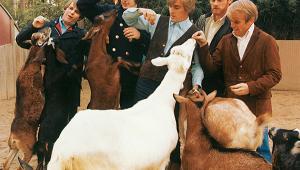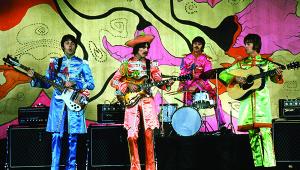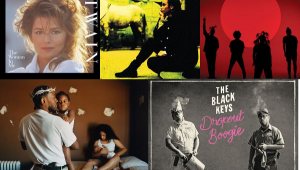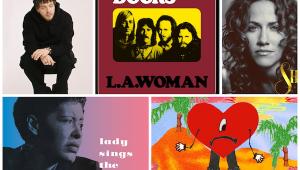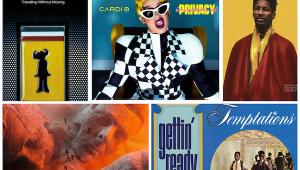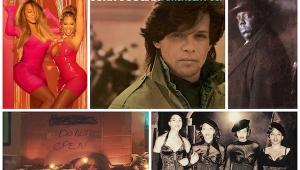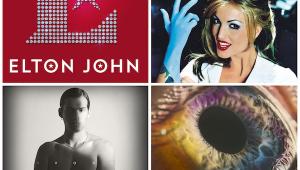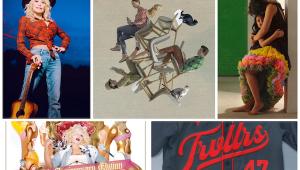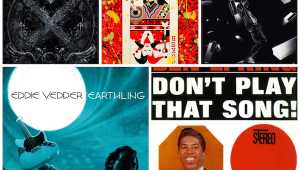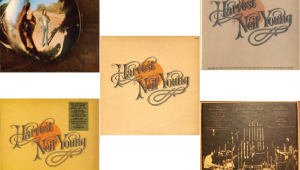Thanks for the timely article. They're currently advertising both versions of Metallic Spheres on hdtracks in 24/44.1 stereo. I had never heard of this album(s) before, but Gilmour's name caught my eye. Unsure over whether to buy the download, I luckily decided to come here to kill some time and found your interview. With the exception of Sirius-XM, I don't stream music. I prefer to buy, not rent. So, is there any chance the Atmos mix will come out on Bluray audio?
Youth on Mixing The Orb and David Gilmour’s Metallic Spheres in Colour in Atmos

When The Orb and David Gilmour came together over a decade ago to produce the two-part, 49-minute ambient soundscape dubbed Metallic Spheres, there almost seemed to be a bit of unfinished business attached to what we were hearing—and now we know why.
As good as the stereo mix of October 2010’s Metallic Spheres truly is, the whizzing and whirring electronic sounds put forth on the album by The Orb’s chief sonic scientist Alex Paterson, as coupled with David Gilmour’s instantly recognizable searing and soaring sustained guitar riffology clinic, seemed almost too big to be contained in just two channels—and original producer Martin “Youth” Glover (bassist/co-founder of Killing Joke, producer/partner in the experimental music duo The Fireman with Paul McCartney) tended to agree.
To take that music to the next level, Metallic Spheres has just been recast in a more concise 40-minute edition duly renamed Metallic Spheres in Colour (Columbia/Legacy). It officially became available today, September 29, on vinyl and CD—and, of course, in Dolby Atmos, as helmed and reimagined by Youth himself. (You can access the Atmos mix now via Apple Music Unlimited and other hi-res streaming service options.)
As a result of his immersive proclivities, Youth—who recently put the finishing touches on a wholly immersive Atmos mix of, shall we say, cathedral-worthy chants of the highest order—has been nothing short of revitalized via his recent excursions into the Atmos landscape. “I’m excited,” he admits. “It’s incredible how our eyes and ears can work together as inner projectors to give us an almost illusionary reproduction of sound. From that, we get 3D, Atmos, and Spatial Audio recordings that harness those illusionary techniques to create what you’re hearing—or what you think you’re hearing.” Heady stuff indeed—but, that being said, hearing the full scope of Metallic Spheres in Colourin Atmos is about as immersively real as it gets.
Youth, 62, and I got on Zoom across the Pond recently to discuss how Metallic Spheres morphed into its current full-bodied Atmos Colour and shape, what notable Orb song seems ready-made for an immersive remix, and what else he’d like to mix in Atmos next. What were the skies like when you were young? / They went on forever. . .
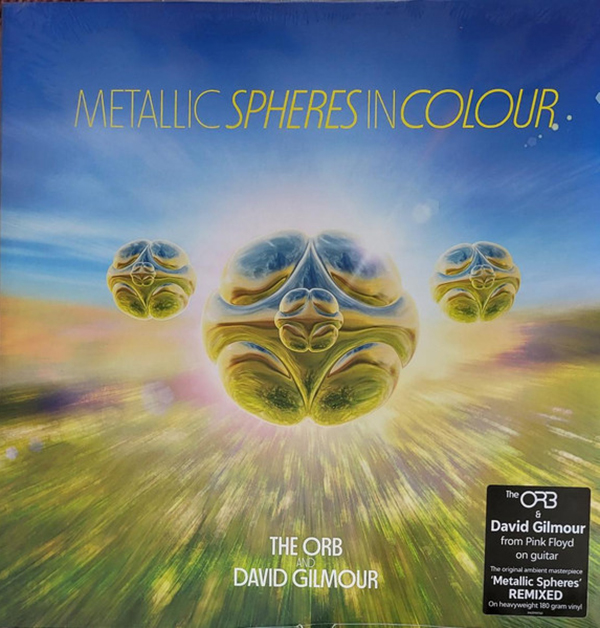
Mike Mettler: How about we start at the beginning here to get the background of how these Metallic Spheres recordings came together. You guys worked together in your own studio that’s called The Dreaming Cave, right? What was the original thought process behind what you guys wanted to achieve with this music?
Youth: The Dreaming Cave is actually a summer house in my garden where I am here in Wandsworth [a borough in south London]. Right now, I’m in the study of the house where a number of albums have been recorded. The studio is now upstairs on the top floor. That’s called Meridian, so it’s had a number of metamorphoses.
Anyway, the album came about initially from David [Gilmour] asking me to remix a track he was doing for the Gary McKinnon Fund [in 2009]. I suggested to David that he add some guitars to what we were doing—which we did, and then we ended up with a 35-minute piece. Then I said, “Actually, it wouldn’t be hard to extend this with a couple of interludes into a 45-minute piece and, hey—presto, it’s an album.” He said, “Well, okay, let’s hear what you’d do,” so I arranged it and added some extra bits—and he really liked it. And that’s how it happened, really.
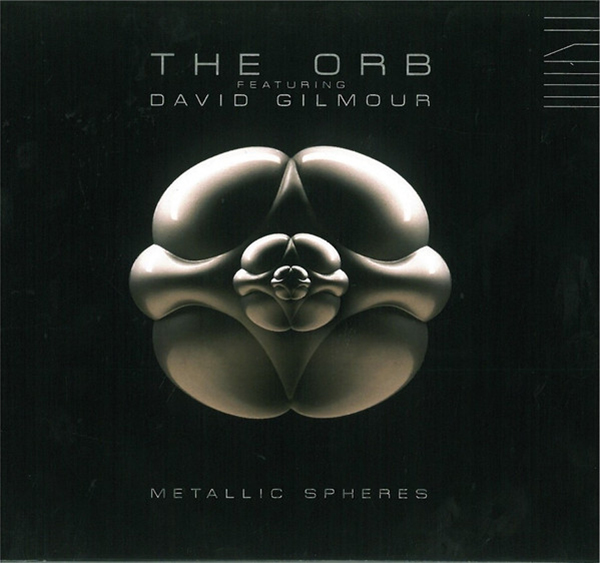
Mettler: Was that original long piece called Metallic Spheres right at the beginning, or did that name come to you guys as you were working on it?
Youth: No, that was actually a remix of something else. We ended up just taking the remix bits out of that, and it just became Metallic Spheres—and it all came together very quickly.
For some reason—and I don’t know why—Alex [Paterson, of The Orb] got the day wrong so he wasn’t here in the studio when David got here. I pretty much ended up doing it with David in the garden, actually. He was just here for four or five hours, but I kept him very busy. (laughs) I said, “Look, can I just treat you like Jimmy Page on a session in ’64?” And he was like, “Sure!” (both laugh) So, we just threw down lots of different ideas and textures.
Mettler: At that point, did you have any other bed tracks to work from, or was it just David recording off the top of his head and you guys just getting it all down in the moment?
Youth: No. I had the main piece, and then maybe another section that was different that I was going to insert in the middle that became another track. I also had a couple of other ideas, one of them being acoustic.
Mettler: Right, we get a little bit of that idea like halfway into the first side—like, 10 to 13 minutes into it [in “Black Graham,” the third sequence/movement on the original album’s “Metallic Side”].
Youth: Yeah. And for that piece, I’d been working with this folk guitarist troubadour named Marcia Mello, from Boston. She’s an amazing artist, and she co-wrote what became one of the songs [the aforementioned “Black Graham”]. She was absolutely delighted, and then David overdubbed some things on that.
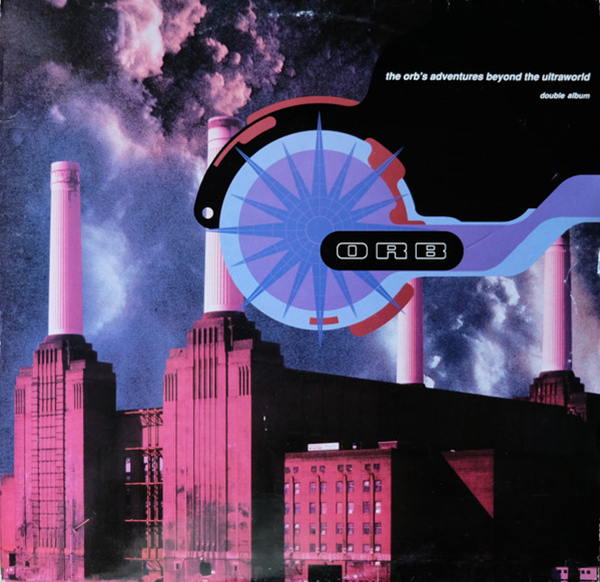
Mettler: Earlier, we were talking about how the idea of 360-degree recording was something you and Alex [Paterson] had already discussed amongst yourselves. Tell me a little bit more about the time you guys decided, “Hey, we gotta record this way.”
Youth: Yeah, I mean, before “3D60” came along, or Atmos, we—along with our engineer Greg Hunter—were always trying to find ways to get a more 3D sound into the stereo mix. And that would include using Doppler boxes, or trying to create a Doppler effect with passing jets or cars. We were using binaural microphones, which is a big part of the Atmos 3D60 experience. That, and just some extreme, clever panning of details.
My favorite bit of outboard gear for getting 3D effects and stuff was—and still is—the Eventide H3000 [Ultra-]Harmonizer. I mean, there are plug-ins for it that are pretty cool, but I’ve still got the actual hardware, and it has these special effects and preset buttons with multi-delay panning and reverbs. We used to use those a lot on Orb tracks, and I also used to use them a lot on remixes and other mixes.
The thing is, the subtlety of the sound we wanted you could only really detect when it was quite ambient, you know? As soon as you put drums in there and some other stuff, you just lose all the subtlety of it, as far as the filigree goes.
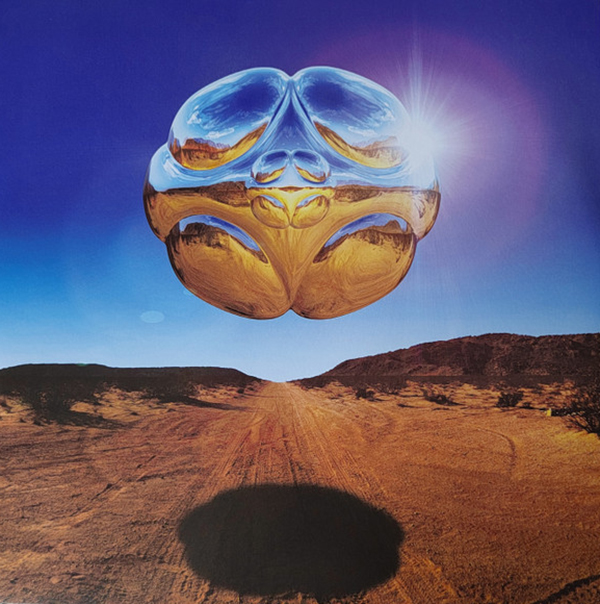
Mettler: I totally get that. What you’ve done with Metallic Spheres in Colour in Atmos shows you know how to keep it open. You could have overloaded a lot of areas on those two 20-minute pieces, but you had that sense of, “We don’t need to put this here. Let it breathe.” Is that fair to say?
Youth: Yes! I’m really excited to listen to it again now! (laughs) You know, I grew up with the Jamaican sound system, which is just made up of wall-to-wall speakers—and it makes a lot of sense. The more speakers the merrier, I say. (chuckles)
Funnily enough, when I used to go to Jamaican sound system [events/parties], you couldn’t really detect any stereo going on because it was just such a brick wall of sound. But what I loved about it was it totally enveloped you with the sound—and then the bass. You were completely inside it, you know? It was really amazing, and I think we’ve been trying to get that feeling and effect ever since in studios—which never comes quite close enough to me! (laughs)
I also noticed when I’ve seen Pink Floyd—and you mentioned this earlier to me about what Giles [Martin] did with those Beatles Atmos mixes—if you keep the body of the mix sort of stereo or even mono, and then you just have certain sounds flying around, it’s far more effective than if everything’s flying around. I think Floyd have always been trying to push the threshold of high fidelity, so it makes a lot of sense to go there.
Mettler: Agreed. “High fidelity, first class,” one might even say—to borrow a line from “Money.” Sometimes, it’s just a matter of, “Can you catch that natural ambience of like actual sound in the space around you?” Is there an example from any of those early Orb recordings, perhaps even a fluffy kind of track where you thought, “This is the one we were trying to get the full 360-degree effect with in stereo”?
Youth: Well, I think with the track you’re talking about, “Little Fluffy Clouds” [the big single from April 1991’s The Orb’s Adventures Beyond the Ultraworld], you can hear some high-placed, left-right swoosh, and then some other things are down there, and other things are over there, and there, and down there. And then the bass—it’s a multi-level thing. [At this point in our Zoom call, Youth is visually pointing out the sound placements as he describes them individually.]
Mettler: “Little Fluffy Clouds” is the perfect example of an Orb track you could totally remix into an optimal Atmos mix to give it the full 360 treatment you were going for with it in stereo. Do you think that’s something you’d want to do?
Youth: Yes, that’s a very good idea. I mean, yeah, why not? Sometimes it’s hard remixing early records like that—but I’m sure that track could be very appropriate for Atmos.
Mettler: How about remixing that U2 track you produced for them some years back [in 1998] in Atmos—their cover of Cole Porter’s “Night and Day”?
Youth: That version of “Night and Day” was on a 12-inch, and it had this great groove with some big strings and a lot of ambient textures. That would be great in Atmos! But, of course, “I Still Haven’t Found What I’m Looking For” [a No. 1 single from March 1987’s The Joshua Tree] would be perfect for Atmos as well.
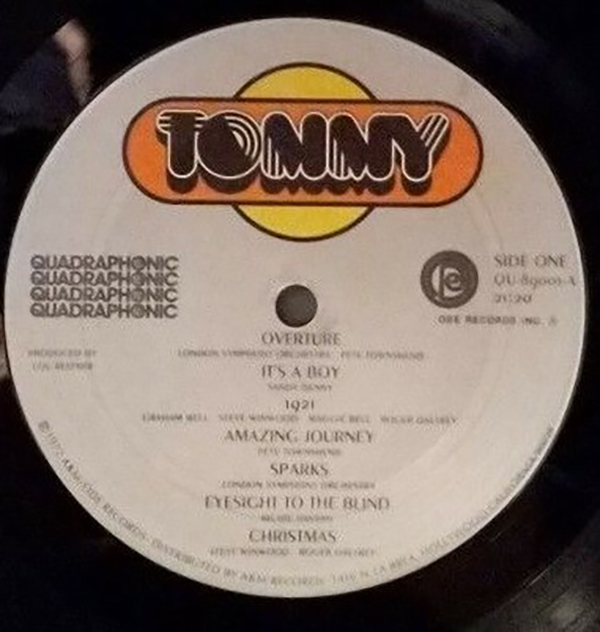
Funnily enough, this reminds me of when I was about 12 or 13, and this would have been in 1972 or ’73. I actually bought (slight pause)—this is so mad! (chuckles)—a symphonic Tommy in quadraphonic. [This would be Tommy as Performed by London Symphony Orchestra and Chambre Choir With Guest Soloists, which was released by Ode Records in 1972. It’s their marvelous orchestral interpretation of The Who’s legendary rock opera, May 1969’s Tommy.]
Of course, I didn’t really know what quadraphonic was back when I was only 12 or 13, but I really loved the sleeve. It was a blown-up pinball with the lines going back, and it was better than the [original] Tommy cover to me.
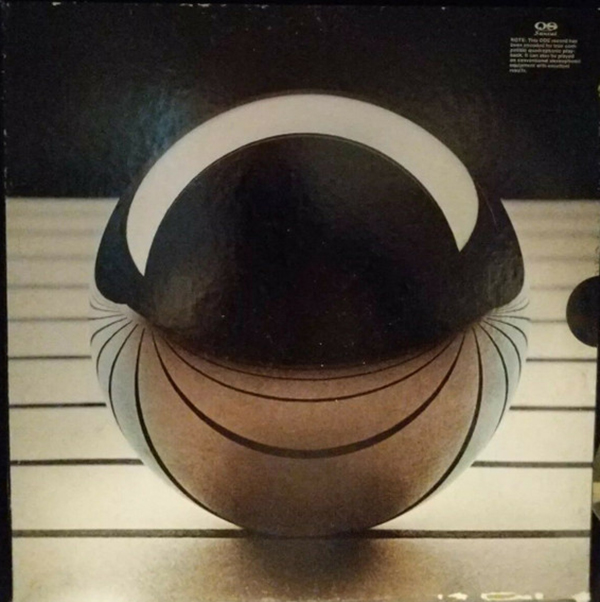
Anyway, I remember rushing home and putting it on my stereo and thinking it was amazing—but I was only hearing half the tracks. It was half the session, actually. I mean, I still love it with the early Beatles stereo recordings where some tape op[erator] had knocked it off in the basement after the mono mixes were done! (both laugh) You’d go in a party, and there’d be a speaker in one room and a speaker in another. If you go in the one room, it’d just be a cappella, and in the other, it’d just be drums—like an instant dub button was pushed, or something! (laughs)
Mettler: Right! Or it’s like when you’re in a grocery store, and sometimes you’ll hear one channel of a Beatles song like “Rain” where you only get Ringo’s part, or just the harmony vocals. (more laughter) Well, to wrap things up, now that that you’ve done Metallic Spheres in Colour in Atmos, what would you want to do in 360 next?
Youth: Well, I already did one for The Temper Trap, for “Sweet Disposition” [a Top 10 hit from this Australian rock band’s June 2009 debut album, Conditions]. They’re big over here, but I’m not sure if that mix has come out yet. It’s a great mix. I made it go all Philip Glass with arpeggios, pianos, and strings.
I also just did another Killing Joke in Dub Comp[ilation] that came out earlier this year that could work in Atmos. We have no idea where the multitracks are for some of the earlier tracks—but on those dub mixes I did do, I’m deconstructing and destroying the original arrangements. There’s all sorts of ambient dub and weird samples going on, and there’s a really good one of “Requiem,” actually. [“Requiem” is the fiery lead track on Killing Joke’s self-titled October 1980 debut album.]
There’s also a famous remix we did in the ’90s of “Requiem” called “A Floating Leaf Always Reaches the Sea.” That was supposed to be an Orb mix, but Alex [Paterson] suddenly went on holiday, so I did it with Kris Weston—[a.k.a.] Thrash—and Greg Hunter, the other “sort of” members of The Orb. And to all extents and purposes, it is an Orb mix—and the sonics on that mix are unbelievable. [British DJ/producer] Andrew Weatherall used to open and close his sets with it. It’s so good. That version of “Requiem” would lend itself to an Atmos mix fully, yeah.
It would also be amazing to do King Tubby or Lee “Scratch” Perry in Atmos—and then, of course, it’d be great to do some Aphex Twin in Atmos too. That would be outrageous.

- Log in or register to post comments


Please, please, please. Let us have all the music, all the visuals, and if it’s 3D, that would be a purchase I couldn’t pass up.

Mike,
In your piece you state "Metallic Spheres has just been recast in a more concise 40-minute edition duly renamed Metallic Spheres in Colour (Columbia/Legacy). It officially became available today, September 29, on vinyl and CD—and, of course, in Dolby Atmos, as helmed and reimagined by Youth himself." but then there is absolutely technologically impossible to encode Dolby Atmos onto an analog vinyl LP or a stereo compact disc format! What gives? WHERE did Columbia/Legacy release an actual Atmos version of this? Google searches are coming up empty.
